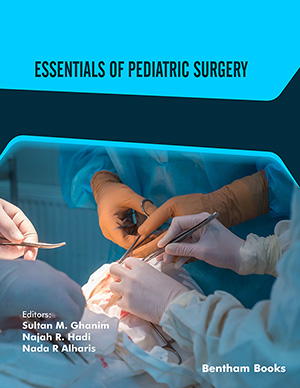Abstract
At the end of week 4 of human embryonic development, paired thickenings appear in the ectoderm on the ventral aspect of the torso. Extending from the axilla to the inguinal region, they form the mammary ridges or “milk lines.” Subsequently they regress and leave a pair of primary mammary buds at the level of the fourth and fifth inter- costal spaces. The primary buds thicken into lens-shaped mammary placodes. Epithelial cells invade the underlying mesenchyme during weeks 7 and 8 to form the primitive mammary disk. In week 9, a surge of mesenchymal proliferation occurs, coincident with a thinning of the overlying epithelium. A dense mesenchymal stroma then coalesces around the bud. Between weeks 10 and 12, epithelial buds form, begin to branch, and extend into the epithelial–mesenchyme bound- ary. By the first half of the second trimester (weeks 13–20), there are 15–20 solid epithelial cords that converge at the nipples. Ramification processes continue to week 32, when the cords undergo apoptosis to establish tubules and alveoli. At birth, male and female mammary glands are equally formed. There are 20 lactiferous ducts draining into the dimple. In later stages of the final trimester, the mesoderm underlying the dimple changes it into a true nipple with an areola. Placental estrogens during the final weeks of gestation cause breast buds to enlarge to create a true breast nodule at birth, about 1 cm in size, in both genders.






















